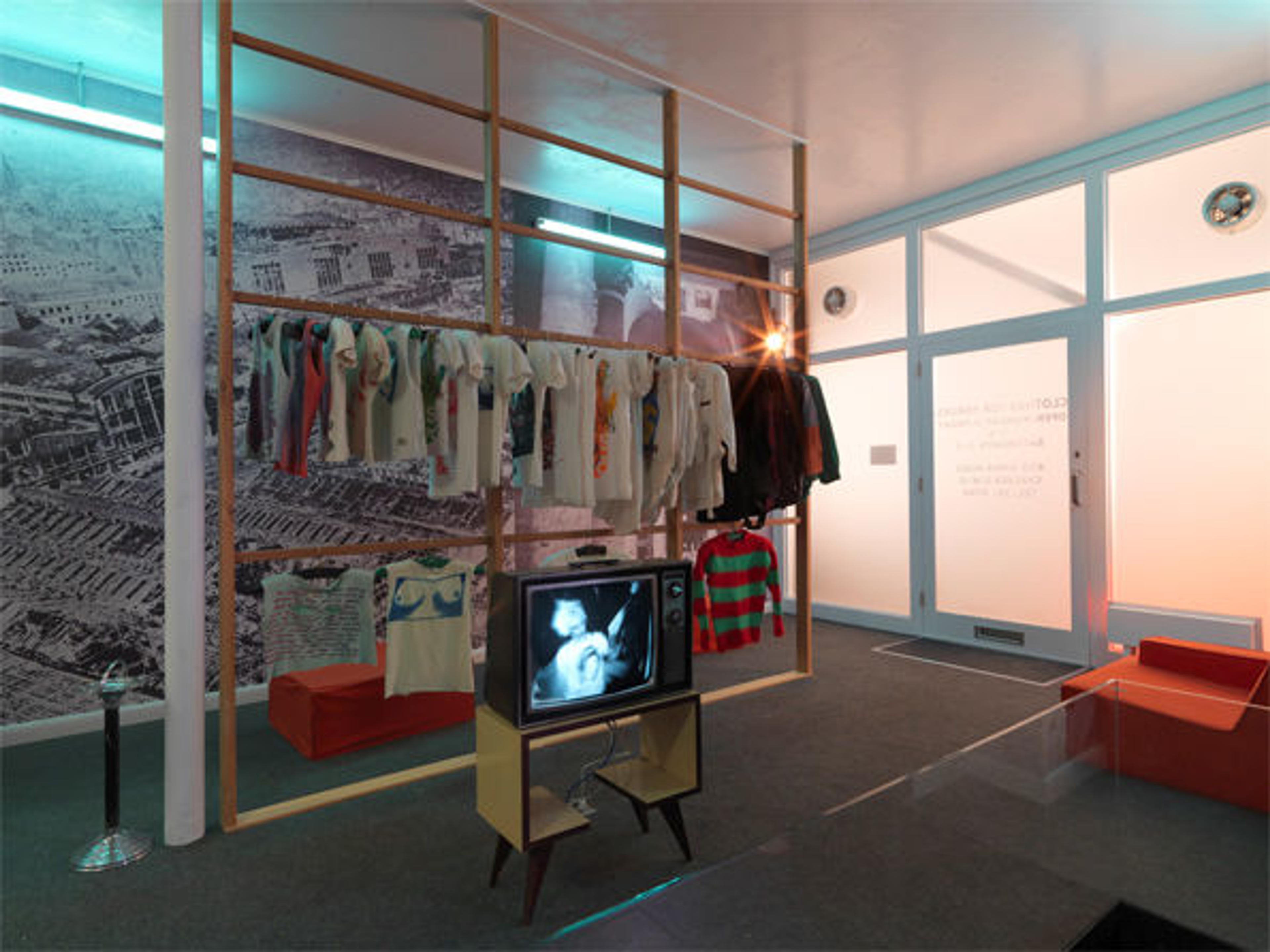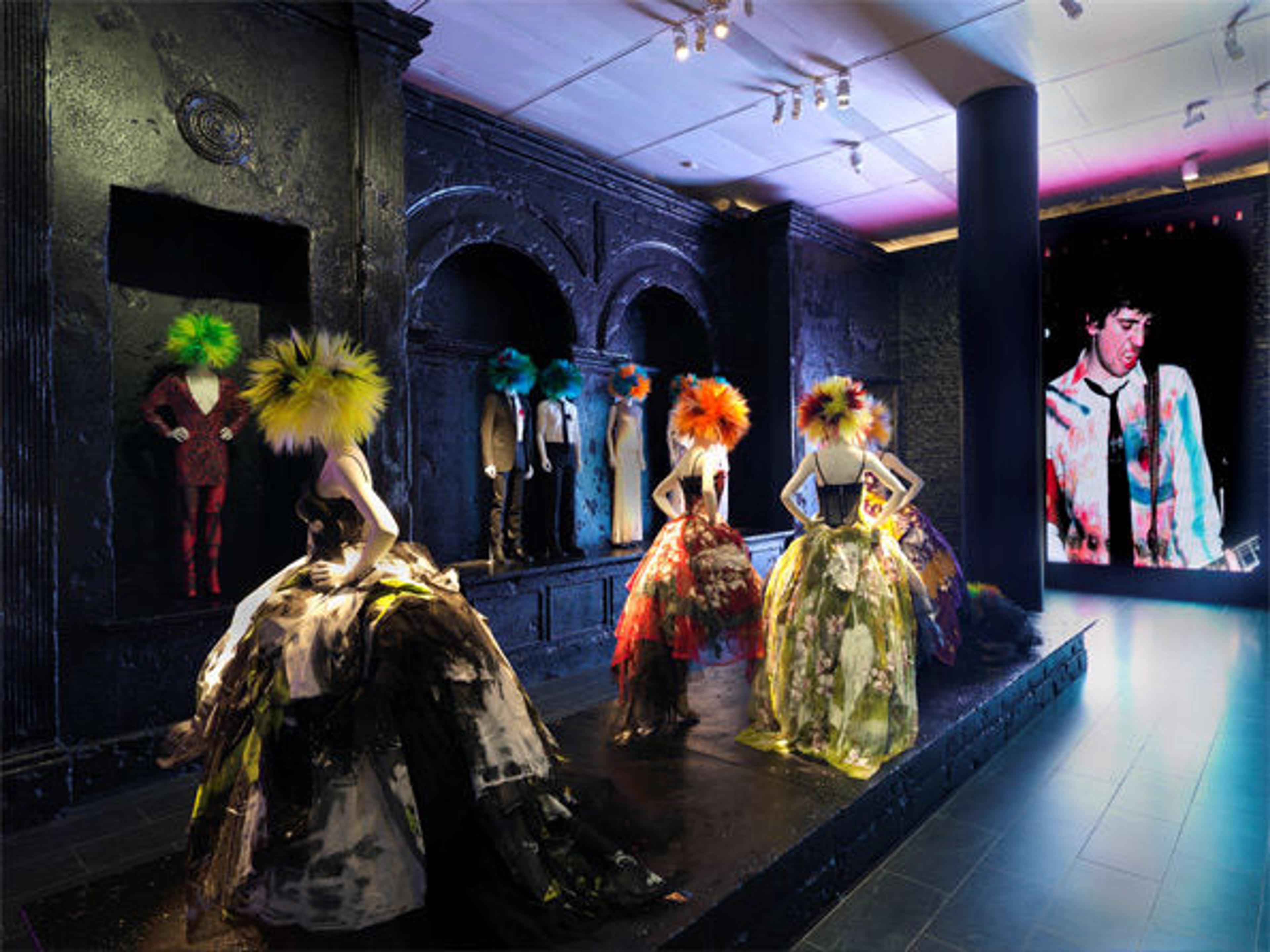
The 430 King's Road period room in the PUNK: Chaos to Couture exhibition. Image © The Metropolitan Museum of Art. See more gallery views.
I learned from visiting PUNK: Chaos to Couture that punk was an ironic movement and that its irony has contributed to its staying power. When punk started in the mid-1970s, it was dealing with a social landscape that had lost sight of its goals. The hippies said they wanted a revolution, but changing the world is not a passive exercise. That's where the punks came in.
The Ramones were at the forefront of the punk trend in New York City. They were a motley bunch of boys from Queens who wanted to be pop stars but didn't have an incredible amount of musical ability. "To hell with it," said they. "We'll work with what we've got." They threw on some ratty T-shirts and decrepit jeans and played catchy tunes that didn't exceed three chords and were devoid of time changes and guitar solos. A man named Malcolm McLaren over in jolly old London heard about the new punk look emerging in New York and said, "Yes, yes" to this ragtag glory. He ended up managing the Sex Pistols and dressing them up in similarly dilapidated duds, shoving them onstage, and watching them change the world. So the punk movement, at its inception, was riddled with ironic contradictions. The Sex Pistols sold sedition to rebellious youth, and ironically, the Ramones—the Sex Pistols' inspiration—hated them for it. Punk became a fashion that McLaren and his partner in crime, Vivienne Westwood, were able to sell in a chic boutique at 430 King's Road in London, and they didn't sell it for cheap. This, in itself, was even more ironic because punk fashion embraced the essence of frugality; it was the D.I.Y. (do-it-yourself) school of fashion in which you took what you had and made it truly your own. It's all very confusing and delightfully absurd. It almost seems like a snarky social experiment on the part of the punk forefathers. "Let's sell the world what they already have. Wouldn't that be ironic?" They did. And it was.

The D.I.Y.: Graffiti & Agitprop gallery in the exhibition. Image © The Metropolitan Museum of Art
Famous punk imagery includes safety pins, zippers, buckles, and stitches—things that hold other things together—but punk made it its business to tear the world apart. (You see what I mean about the irony?) Safety pins and zippers may now seem purely based on the utilitarian purposes of the movement, but I have another theory. Everyone knows that punk came out of the disenchantment of 1970s youth, who looked around and said, "We're trapped," as many before them did. But while the children of other eras tried to hide their perceived flaws, punks did not. They embraced them. Though the kids were afraid of entrapment, they wore straitjackets. The punks were some of the most successful satirists in history. They used music, fashion, and art to achieve their goals, and they did it brilliantly. What better way to attack the status quo than by being the status quo? Punk put convention into submission and shoved a safety pin in its ear.
Punks exploited their governments and the conservative nature of society. They were warriors, hacking and slashing their way through ideological enemies. And if this exhibition taught me anything, it's that punk won. It is not just loud music or plaid skirts. It is not about being "good" at what you do; it's about doing it. So I urge you, readers, to embrace D.I.Y. Take life by the studs and be your own incendiary. Be yourself because at the core, that's what punk was saying. And that's still revolutionary.
Related Link
PUNK: Chaos to Couture